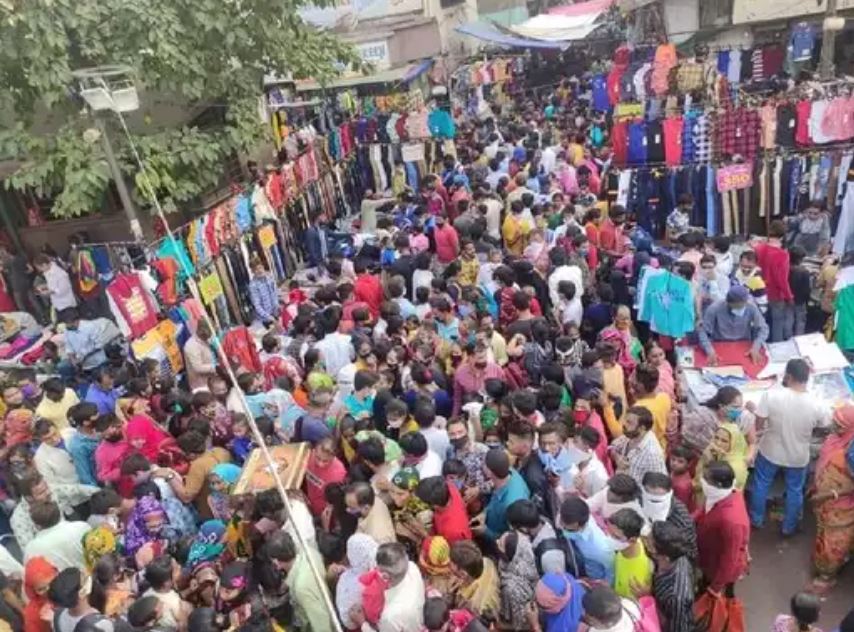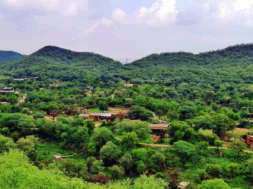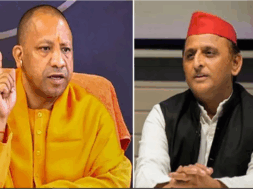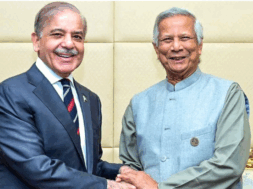
“Corona May Peak Mid-April, Decline by May End:” Scientists
Manas Dasgupta
NEW DELHI, Apr 3: Even as India recorded nearly 90,000 new Coronavirus cases in the last 24 hours ending on Saturday morning, the next 60 odd days could be crucial if predictions by some scientists prove correct. For record, the predictions for the spread of Covid-19 made last year by the same group of scientists had proved correct and it is likely that the current year too it may not go much awry. And unlike in 2020, the peak this time may see more than one lakh new cases a day for a few days before the downward slide starts.
Using a mathematical model, scientists have predicted that the ongoing second wave of coronavirus disease across India could peak by mid-April, after which it may see a decline by May end.
A mathematical approach, named SUTRA, predicted last year that the initial spike of the coronavirus infection in August would rise by September and decrease in February this year.
Manindra Agrawal, a scientist from the Indian Institute of Technology (IIT) Kanpur, applied the model to predict the trajectory of the current spike in coronavirus disease and found that the number of daily new infections is likely to peak in mid-April.
“For the last several days, we have found that there is a reasonable chance that the cases in India could peak sometime between 15-20 April. It is a sharp slope, but on the way down, it would likely be equally sharp, coming down very fast and by end of May likely to see a dramatic reduction,” Agrawal said.
He further said there was some uncertainty in predicting the peak value of daily new infections because of the sharp rise. “Currently, it is coming to 1 lakh infections per day, but this can go up or down. But the timing remains the same between April 15-20,” he added.
Independent calculations made by scientists, including Gautam Menon from Ashoka University in Haryana, have also predicted that the surge of the second wave of Covid-19 infections could be between mid-April and mid-May.
“Any excessively precise prediction, of a peak within just a 5-day window, would ignore the many uncertainties associated with the inputs to any such calculation,” Menon said.
Agrawal stated that the SUTRA model uses three main parameters to predict the course of the coronavirus pandemic. He said the model relies on inputs from daily reported new infections, based on which the value of the three main parametres are deduced.
“We learn everything from the daily-infections data. The beta value across India has gone up by 50 per cent in March, which indicates that a combination of factors — people becoming more relaxed, and more infectious variants going around. But precisely what reason this could be is something biologists have to say,” he added.
Agrawal said the model did not previously predict a second Covid-19 wave in India as it could have been due to a change in the parameters sometime between February and March this year. “So clearly during this time, some parameters had changed. So we had to wait for some time to collect new data and see how the parameters had changed, which we now know,” he added.
On Saturday, India recorded 89,129 new Covid-19 cases and 714 related deaths in the last 24 hours, according to the health ministry’s dashboard. With the new infections and fatalities, the country’s tally mounted to 12,392,260 and its death toll to 164,110, respectively.
Eight states witnessed a steep rise in daily new Covid-19 cases and accounted for 81.42 per cent of the infections reported on Saturday, the Union health ministry said.
These eight states are Maharashtra, Karnataka, Chhattisgarh, Delhi, Tamil Nadu, Uttar Pradesh, Punjab and Madhya Pradesh.
India’s tally of Covid-19 active caseload also increased to 6,58,909 and now comprises 5.32 per cent of the total infections. In a day, there has been a net rise of 44,213 active cases.
Ten districts — Pune, Mumbai, Nagpur, Thane, Nashik, Bengaluru Urban, Aurangabad, Delhi, Ahmednagar and Nanded — account for 50 per cent of the total active caseload of the country.
Maharashtra has shown a nine-fold jump, the maximum increase in the number of active cases in the last two months. In percentage terms, Punjab has reported the maximum increase in active cases.
Five states — Maharashtra, Karnataka, Chhattisgarh, Kerala and Punjab –cumulatively account for 77.3 per cent of the total active cases in the country. Maharashtra alone accounts for 59.36 per cent of the total active caseload of the country.
Twelve states –Maharashtra, Chhattisgarh, Punjab, Karnataka, Delhi, Tamil Nadu, Madhya Pradesh, Gujarat, Haryana, Rajasthan, Uttar Pradesh and Kerala — are displaying an upward trajectory in daily new cases, the health ministry said.
Cabinet Secretary Rajiv Gauba chaired a high-level review meeting on Friday with chief secretaries, directors general of police and health secretaries of all states, with a focus on 11 states and Union Territories that have been reporting a very high rise in daily cases and fatality because of Covid-19 in the last two weeks.
These states and UTs “of grave concern” were advised to take up immediate and effective measures to ensure containment of active cases and daily deaths through enhanced testing, strict containment, prompt contact tracing and enforcement of Covid-appropriate behaviour, and adherence to the standard clinical management protocol shared earlier with all states and UTs.
India’s cumulative recoveries stand at 1,15,69,241 with 44,202 recoveries being registered in a day.
Of the 714 fatalities were reported in a day, six states account for 85.85 per cent of the new deaths. Maharashtra saw a maximum of 481 deaths, followed by 57 in Punjab.
Thirteen states and UTs have not reported any Covid-19 deaths in a day. These are Odisha, Assam, Ladakh, Dadra and Nagar Haveli and Daman and Diu, Nagaland, Meghalaya, Manipur, Tripura, Sikkim, Lakshadweep, Mizoram, the Andaman and Nicobar Islands and Arunachal Pradesh.
In a significant development in the fight against Covid-19, the cumulative number of Covid-19 vaccine doses administered in the country has crossed 7.3 crore mark.
Cumulatively, 7,30,54,295 vaccine doses have been administered through 11,53,614 sessions, according to the provisional report till 7 am on Saturday. The cumulative vaccination figure includes over 6 crore first doses, while the second dose numbers are also nearing the 1 crore mark, the ministry said.
Official sources said considering the worsening situation, the possibility of another round of lockdown in entire Maharashtra could not be ruled out. Chief Minister Uddhav Thackeray said on Friday. “People have become complacent. We are in a Catch 22 situation – should we look at economy or health?” the Chief Minister said in a televised address.
Faced with an alarming spike in Covid cases, Pune has ordered 12 hour curfew from 6 P.M. daily for one week from Friday while Delhi is also witnessing a worrying surge with the city recording 3,594 cases.
“88 per cent of Covid-related deaths in our country have been in the age group of 45 years and above. Therefore, prioritizing vaccination for this age group is paramount to prevent COVID-related deaths,” Dr VK Paul, Member (Health) NITI Aayog, said as the country opened expanded the inoculation drive to include the age group.
With 1.23 crore infections, India has the third highest number of cases in the world after the United States and Brazil.













